10 key tips to marketing a profitable food business in New Zealand: Advice from Kelli Walker, Valerie Manna and Martyn Atack
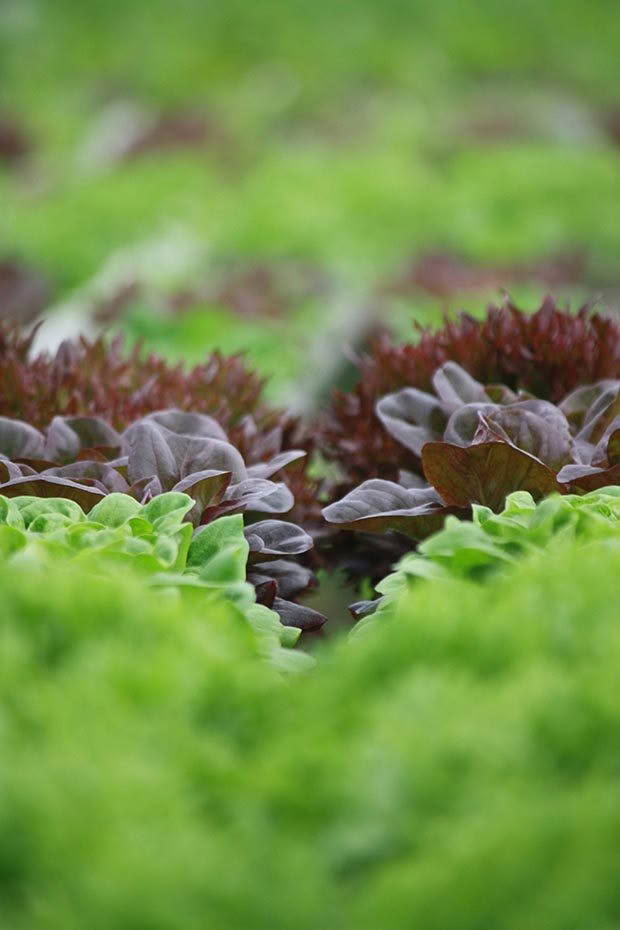
Three experts share their wisdom on how to create a profitable food product.
Words: Nadene Hall Photos: Sally Tagg & Nadene Hall
IS YOUR FOOD PRODUCT A GOOD IDEA?
Martyn Atack says no-one has ever come to him with a bad food idea. “That’s quite often one of the first questions off people’s lips,” says Martyn. “But it’s the wrong question. One of the key things to understand is that there’s no value in having a good idea. A good idea only begins to obtain value when people put effort into converting it into something real. A better question is how many other people (consumers) think it’s a good idea?”
Part of Martyn’s job is to help a producer rule an idea in or out before they ever get to the big expense of creating an actual product. Instead, he starts with a basic question: can this idea make a profit? His advice is to start with the end-result in mind, and assume you’re going to sell into a mainstream supermarket, the most difficult case study. Then, ask yourself:
• What price your product will retail for (including GST)?
• What retail gross margin should be applied?
• Where will it sit in a supermarket?
• What packaging size will it be?
For example, you’re going to make a product that will be sold in a 500g pottle for $5.99. Take away GST (78c) and retail GP (gross profit, 25 per cent) and your wholesale price is $3.91. But there may be a surprise waiting for you, says Martyn.
“The supermarket says, ‘hang on, we’re going to list this product in our magazine so you’ve got to give us a 10 per cent rebate on that because that’s a marketing contribution. There’s an 8 per cent distribution premium, and we know that 0.5 per cent of that stock is going to be broken so that’s 0.5 per cent for ullage. Oh, and we’re going to pay you on time, so that’s another 2.5 percent.’”
The result is your list price which is $2.80. If you know your input costs, this allows you to work out your profit margin. But you need to be careful, says Martyn. “For example, if you’re making 20 cents pure profit on this product per unit after tax, and it’s going to take you six months to sell 25,000 units, then that’s $5000 pure profit,” says Martyn.
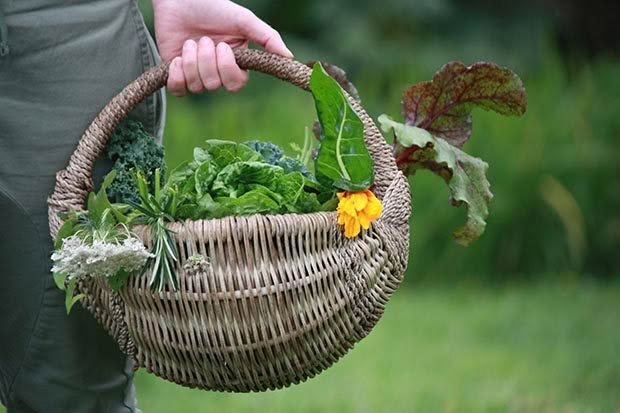
“You might go ‘it’s going to take me 40 hours a week. I’m making $833 profit a month. Do I really want to do this project for that kind of return?’” The idea might work if you’re selling at a farmers’ market says Martyn, because you retain all the margin, but is that where you want to stay?
TALK TO THE EXPERTS
Forage & Ferment’s Kelli Walker and her husband Simon Allen have a wide set of skills. Kelli worked in marketing, Simon in business development and accounting. But they knew they still had big gaps in their knowledge. “We definitely talked to friends and professionals” says Kelli.
“An example would be we have been working to understand pricing models and retail margins – none of that is familiar to us. We went to a business consultant who’s well known with small start-ups to take some advice. We knew our costs and we knew what we wanted to try and get out of it, but we didn’t know what supermarkets and retailers need.”
UNDERSTAND THAT PEOPLE DON’T BUY WHAT YOU SELL
One thing that resonated with Kelli during her time studying permaculture was its guiding principle – people care, earth care, fair share – and it shaped the ‘why’ of her business: to make a positive difference to the food system that isn’t at the expense of the environment.
“We subscribe to that whole (marketing consultant, author of Start with Why) Simon Sinek view, that people don’t buy what you sell, they buy why you do it. Once we identified the ‘why’, the what and how started to fall into place. But I think the most fundamental thing is to start with that ‘why’ because it sets the whole framework for what follows.”
Making decisions once they had worked out their ‘why’ made developing their business so much easier, says Kelli.“We could have chosen someone who is growing organic veggies in Hawkes Bay, then trucking them to Auckland, but why do that when I can source our ingredients from someone who lives a couple of hundred metres from my house who I know is a responsible grower?
“We wanted to use sustainable New Zealand sea salt to reduce food miles. We chose traditional ceramic crocks and no plastic. The glass jars are manufactured here in New Zealand because we felt all of these components made a big difference, not just to the quality of our kraut and being aligned to our core values, but they also made a difference to Mother Earth as well.”
KNOW WHY YOUR PRODUCT IS SPECIAL
It’s common for someone with a good food idea to look at what others are doing, then try to make their product look and sound similar, says Lincoln University marketing lecturer Valerie Manna. That is a mistake.
“Small producers want to lessen their risk, the uncertainty, so they mirror what they perceive as being successful and then they don’t differentiate. They think ‘I better look for a model of somebody like me who has been successful, and then I’m lowering my perception of my risk if I kind-of, sort-of-but-not-exactly use them as a template’.
“This misses two things: one, you don’t know if what they’re doing translates to profit; and two, you haven’t given the customer a reason to reach for your product instead of that model.”
Valerie uses the example of a business she and her students worked with a few years ago, a cheese producer using milk from his small goat herd. He wanted to name his company and products after a river that ran beside his farm because he observed similar producers were using geographical names. “The whole idea of marketing is how are you differentiating yourself? He didn’t think anybody would be interested, but his story is, this is cheese hand-made by Grant. His story is he knows the name of each goat, what they like to eat, what order they like to be milked in.
“It has nothing to do with the river. Are people going to remember that river? What happens if something goes wrong with the river? He had a unique story and he didn’t value it, he thought no-one would be interested, but they are.” Tell your story, even in your name, says Valerie, because that’s what people will connect with and remember.
HOW DO YOU FIND GOOD MARKETING ADVICE?
Valerie Manna says she’s seen some bad professional marketing of artisan products. “I’ve seen work people have paid darn good money for and I’ve thought ‘I’m so sorry you’ve paid for this’. I’ve seen – especially for small producers – big organisations training their new graduate hires on the little guy who can afford to lose the least. Often what a start-up needs are people who’ve been around the block.”
GET GOOD QUALITY FEEDBACK
Kelli first tried selling her products at her local farmers’ market, encouraged by the positive responses of friends and family. But she says she was still unsure of how they would be received. Were people just being nice to her?
That’s a risk with testing your products on people you know, says Valerie Manna. “A lot of people start off with friends and family and the value of that depends on who your friends and family are. Do they just not want to hurt your feelings? Or are they ones who are really thoughtful and who can articulate the experience of a consumer? There’s always an angle that somebody else’s perspective can help you understand. That’s why it’s good to run it by someone who has never tried it and perhaps doesn’t know you, because your consumer is starting from ground zero.”
Martyn Atack agrees. “It’s a mistake for a brand owner to think they know the voice of the consumer, because a lot of people get hung up on what they like, and it’s not about what they like. It’s going to be about what consumers like. You shouldn’t be afraid to let consumers tell you exactly what it should be. “At a farmers’ market you can ask consumers questions directly and they’ll tell you what features they value. ‘Yes, I like the sweetness’. ‘No, I don’t like the bitterness’. ‘The texture is fantastic’. ‘It’s too sloppy’.”
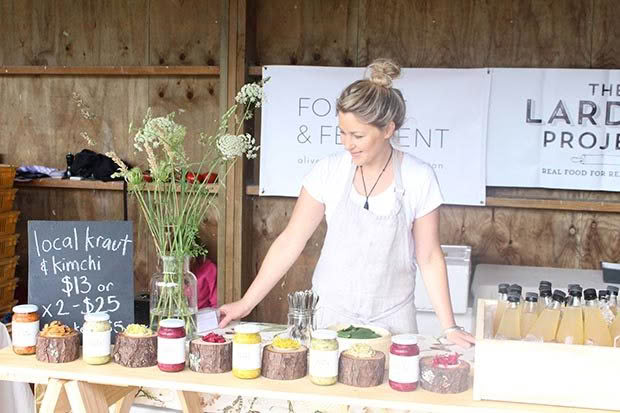
It was that kind of feedback that led to a big discovery for Kelli. “At about 21-28 days, we think (our sauerkraut) is at a beautiful flavour stage and yet it’s still at a crunchy, textural stage and that seems to be what Kiwis like. If you go to Germany, they will leave (a sauerkraut) down for a lot longer, and it will increase in flavour, it will be stronger, and also mushy – that’s how the Germans love it. It was realising crunchy texture is what works for the Kiwi palate.”
That discovery had a practical effect on the ‘best before’ date Kelli puts on her ferments. While the process she uses is a traditional preservation technique that can keep food edible for years, she puts a ‘best before’ date of six months after manufacture. That way, she ensures customers still get the same crunch and flavour they got on the day they tried it at her market stand.
2 SPECIAL BENEFITS OF FARMERS’ MARKETS
Selling at the farmers’ market five minutes from her house was a no-brainer for Kelli. “It’s such a fantastic grassroots way to sell our goods to customers. We get to talk directly to customers, we get to test our products, we meet other inspiring businesses and growers, and you make good margin by selling direct which is what you need when you’re starting out because it’s costly.”
But farmers’ markets have another unique benefit that no store can provide, says Valerie Manna. “For yourself, think about a farmers’ market – why did you go? Why did you not go to New World? Why not an organic food store? If you really dig deep, I’ll guarantee that you did not go to a farmers’ market for a specific product. You went for the experience, you went for the feeling.
“(Visitors) want a connection with the people who are producing. That’s really what you’re selling. It isn’t hand cream, it isn’t bread – they are buying a personal connection, or fun or novelty. In a supermarket they get an assortment and a price point, but a farmers’ market offers different things.” Kelli Walker wanted to join the local food movement and for her stall to be a special experience for visitors.
“Our stand at the market is waste-free. When visitors want to sample our product, we have leaves picked from our garden like silverbeet, cabbage, nasturtium, kawakawa leaves and we use real forks that we take home and wash. They can load up their leaf with whatever krauts or kimchi they want to taste and go from there, and people love that. “By serving things in that way, we’re helping to tell our stories, to show our core values, and to tell our story of ‘why’. People don’t buy what you do, they buy why you do it, and I think things like (our stall) communicate that.”
“People believe the product sells itself,” says Valerie. “But to get that to happen, your marketing first has to tell your consumer why to buy. After that, your product tells them why to buy it again.”
GOING FROM THE ARTISAN TO THE BIG TIME
Making a product in small batches in your own kitchen is one thing. But scaling it up to a manufacturing process can be difficult or in some cases, impossible.
Kelli Walker is fermenting her kimchi and sauerkraut in traditional ceramic pots, albeit ones that are 40 litres in size, almost 10 times bigger than her home kitchen versions.
“We’ve got huge big ceramic crocks that are heavy, so once they’re filled you can’t move them. We have to put everything on trolleys so we can move them and these things take up a lot of space. We’re lucky the commercial kitchen we use has a big storage area.”
Turning this hands-on process into a machine-manufactured product is not something Kelli feels is possible. “I think that’s where the magic is, where the love needs to be and that we need to be owning the fermentation process. We consider ourselves to be a fermentory, taking care of the microbes throughout the whole transformative process.
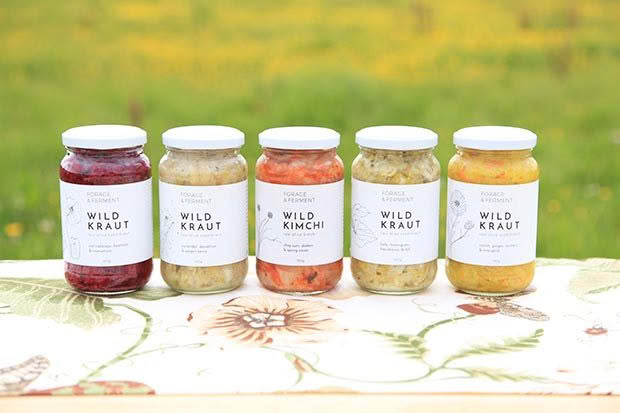
“I guess in time our model will be more about having our own premises. There’s some really beautiful examples overseas, where they either integrate with a café or sell at the farm gate.” For those who do want to upscale, Martyn says contracting manufacturers have minimums, often far too high and unaffordable for a small producer. That’s where the FoodBowl in Auckland has been a huge step forward. It allows small producers to hire a fully set-up industrial food manufacturing premises with a big range of specialist equipment. They can then do a run of product, either a one-off, or make a regular booking.
“The requirements for industry are often quite large,” says Martyn. “Scale matters to them and many of the contractors just can’t do small scale stuff. But when the FoodBowl came along, this provided a mechanism for people to bridge that gap.” Another common issue when scaling up is ingredients suddenly become a problem.
“Many ingredients that might be available on a household scale are not necessarily available on an industrial scale,” says Martyn. “I had one client who would have liked to use Lurpak butter in her product. This is manufactured in Europe and it’s really, really expensive. To have scaled her product up using Lurpak butter would have been prohibitive.
“The right question is, does it matter to consumers? There may be a taste difference but that’s not a question to be asking either. The question is, does the taste difference matter and that’s the only thing that’s important.
“You have to be prepared to make compromises in order to be able to scale up. There has to be flexibility.”
WHY THE PHYSICAL MATTERS MORE THAN YOU THINK
Packaging might sound like one of the simpler choices to make. For Kelli, the answer was obvious: NZ-made glass jars that are easy to recycle, holding 390g of product. But packaging can be a vexing question because there are a lot of practical considerations says Martyn. It’s good to have an idea of what you think will work, but again, some flexibility is important.
He uses the example of creating a liquid nutritional supplement that people can carry with them and take during the day. “Should it be in a bottle? How convenient is that? A glass bottle or a plastic bottle? Maybe it needs to be in a sachet, but that means they have to suck it out of a sachet and that’s not right.
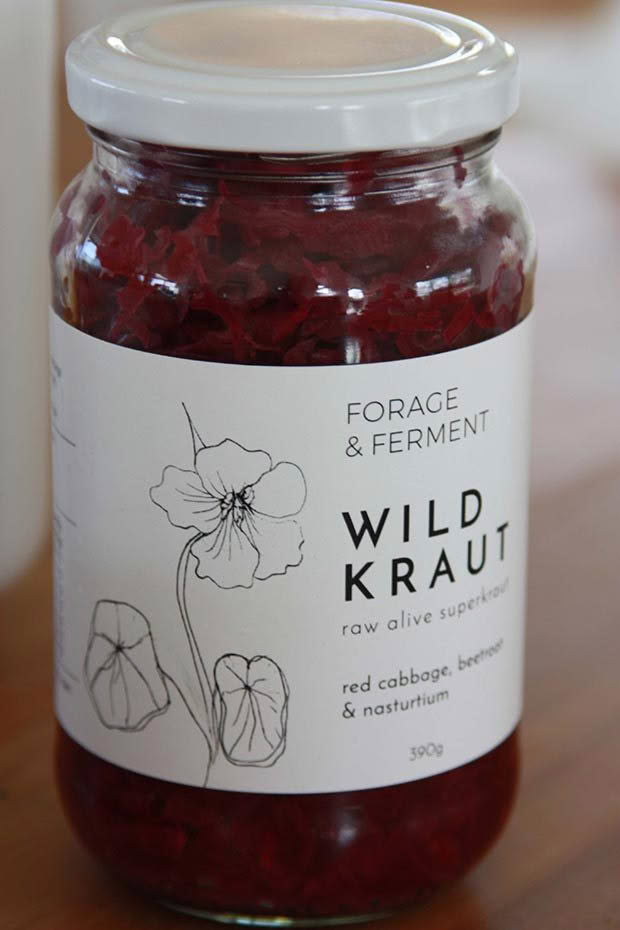
It’s easy to figure out the best packaging for some products, but for others it can fundamentally change the product itself.
“So then, does it have to be a liquid? Maybe it can be a powder and it can go in a sachet and people can mix it with water whenever they want? There’s got to be an element of convenience, then you can go and ask consumers the questions: is this the best way of having this, is this what you want? And they’ll quickly tell you.”
GETTING THE RIGHT LOOK
One of Kelli’s favourite parts of creating her product line was the label design. “I love a good brand, I love beautiful design and I love really clean, minimal design. So for me, I knew exactly what I wanted and I had mocked it up on an app, and I took it to a local designer. We kept it really clean and crisp, because we also wanted to create a blank canvas that let the product sing.
“But it was so plain. We then toyed with the idea of an illustration to bring it to life, one of the marginal elements in it, the wild weed or wild edible. When I mentioned it to our artist-friend Hannah Jensen, she just whipped it up, it was a doodle and two seconds later she hands it over and says, ‘there you go’.”
However, most people new to food labels tend to go DIY, and it’s a false economy, says Valerie Manna.
“Think about the mindset of somebody who becomes an artisan producer. They’re usually pretty self-determined people, and they’re thinking ‘why would I pay a graphic designer who will charge me an arm and a leg when I’ve got Microsoft Word?’ The entrepreneur doesn’t necessarily have the eye of a consumer seeing it for the first time who is making a choice between producer A and producer B.”
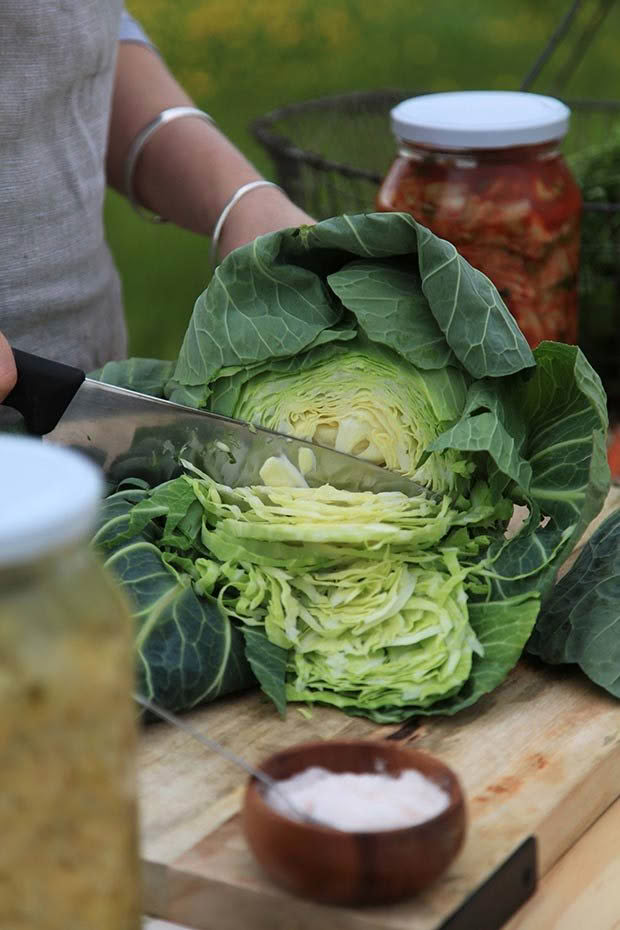
A good label helps a consumer choose your product, whether it’s because they read that you use a traditional family recipe or all-natural ingredients. The label tells part of your story.
“You’ve got to stop thinking about it as a label and start thinking about it as an opportunity,” says Valerie. “What is the opportunity? The label helps answer the consumer’s questions about why they should try your product. Think about why that packaging is useful – not to you, to the customer. This is how they get to know about you.”
VALERIE’S TIP
Come up with the mother of all lists of what could possibly go on your label – don’t edit yourself to what fits on the label – then pick the top three. “Start big, start wide, and then edit yourself and say, ‘I only have this much space. Outside of required minimums, like nutrition facts, what are the three elements that could help move a potential consumer to try the product?’”
4 TIPS FOR GETTING GOOD MARKETING ADVICE
• If you’re on a budget, look to your local university or polytechnic and see if they have a marketing course – if they do, a lecturer and students may love the opportunity to work on a real project and offer you a range of options.
• If you have more time and money, the Food Innovation Network (www.foodinnovationnetwork.co.nz) connects people, and you can get mentoring and feedback from experienced producers.
• Use a company like Black Box (www.blackbox.kiwi) which sends out samples to a range of consumers. “You can pay them to ask relevant questions,” says Martyn Atack. “They will identify the correct group of consumers and survey them on your behalf.”
• Use social media and products like www.surveymonkey.com to survey your customers and ask key questions.
CHECK OUT THE FOODBOWL
The FoodBowl is a resource created for small food producers: www.foodinnovationnetwork.co.nz/location/foodbowl
TIPS ON USING INSTAGRAM FOR MARKETING
https://www.instagram.com/p/BbWAdIdgknn/?taken-by=forageandfermentnz
Forage and Ferment creator Kelli Walker has found more success on Instagram than Facebook. Styling her food to appeal to customers online is an important marketing tool for Kelli, especially on Instagram.
Words: Nadene Hall
For a marketing professional like Kelli Walker, the basics of marketing included having a website and Facebook page. But even she got a surprise. “I’ve had exposure to digital media marketing online, but it was before Instagram really hit, and I never realised the power of Instagram for a little food business and that has blown me away.”
https://www.instagram.com/p/BbJXWj9AuNV/?taken-by=forageandfermentnz
4 REASONS WHY INSTAGRAM WORKS
– It’s easy to use
– It’s affordable – other than your time, it’s free
– There are no barriers to entry
– You can talk directly with customers and influencers
“In the first two weeks of being on Instagram we had six wholesale inquiries, it was crazy,” says Kelli.
https://www.instagram.com/p/BaiDojpgYuY/?taken-by=forageandfermentnz
“Nothing on Facebook but on Instagram, bang! All these little health food shops from all around New Zealand saying ‘we just love this, how can we buy it?’ Well, I wasn’t prepared for that, and that’s really what kickstarted why we needed to understand margin. We needed to understand how to price it and get it into a wholesale environment.”
https://www.instagram.com/p/BaYGHNFglvR/?taken-by=forageandfermentnz
ABOUT OUR EXPERTS
Kelli Walker: Former corporate marketing specialist, now artisan food producer. www.forageandferment.co.nz
Valerie Manna: Deputy programme director and senior lecturer in marketing at Lincoln University’s Faculty of Agribusiness and Commerce. www.lincoln.ac.nz
Martyn Atack: Qualified, independent, consultant food technologist, food product developer for companies including EasiYo, Tip Top Ice Cream and Kapiti Cheese. www.cogito.co.nz
Love this story? Subscribe now!
 This article first appeared in NZ Lifestyle Block Magazine.
This article first appeared in NZ Lifestyle Block Magazine.
